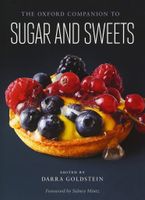Advertisement
cheese, fresh
Appears in
Published 2015
Before pasteurization, the milk was left to sour through the natural action of lactic acid bacteria; today, it is usually inoculated with bacterial cultures of the “mesophilic” type (suited for growth at temperatures between about 75° and 90°F [24° to 32°C]). Rennet or another source of enzymes may be added to further promote coagulation. Once the casein sets into a curd, it is drained and pressed to expel more whey. Renneted curd may be gently heated to firm up the texture and cut into pieces so as to present a larger surface area for efficient whey drainage. Rennetless cheeses generally omit heating or curd-cutting. The fat content of the milk or cream, the mixture of different bacterial species, the pH of the cultured milk, the strength of the enzyme solution, and the temperature to which the curd is heated are the chief variables affecting the flavor and texture of the finished cheese. Sometimes a little cream is worked back into skim-milk cheese for added richness.


